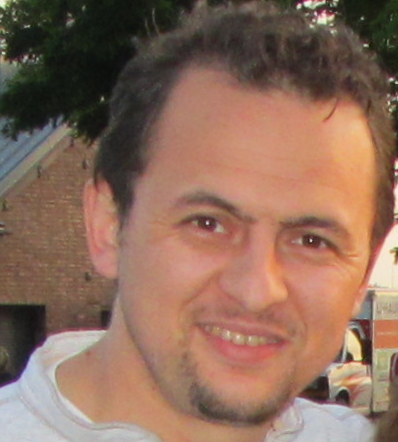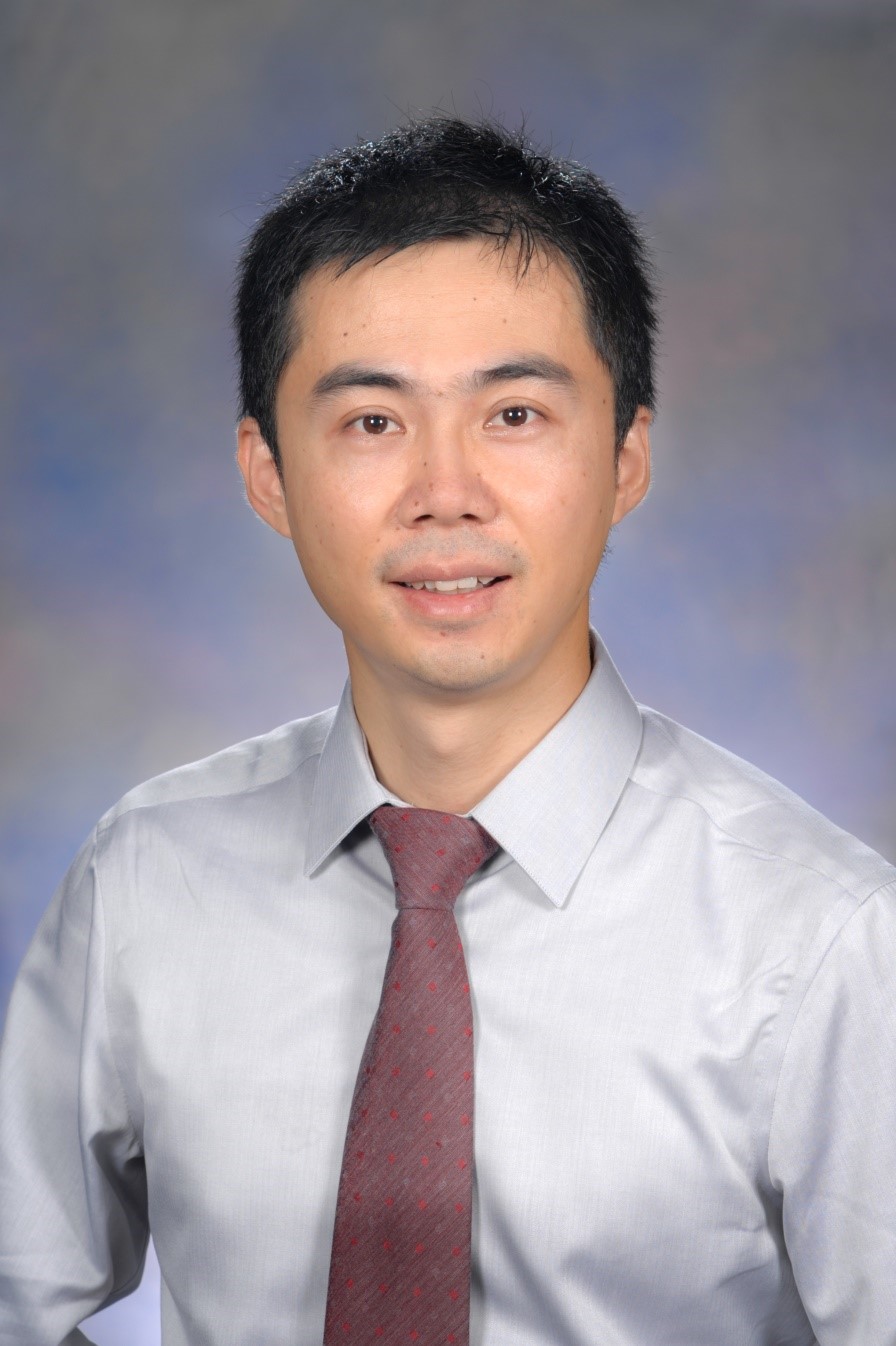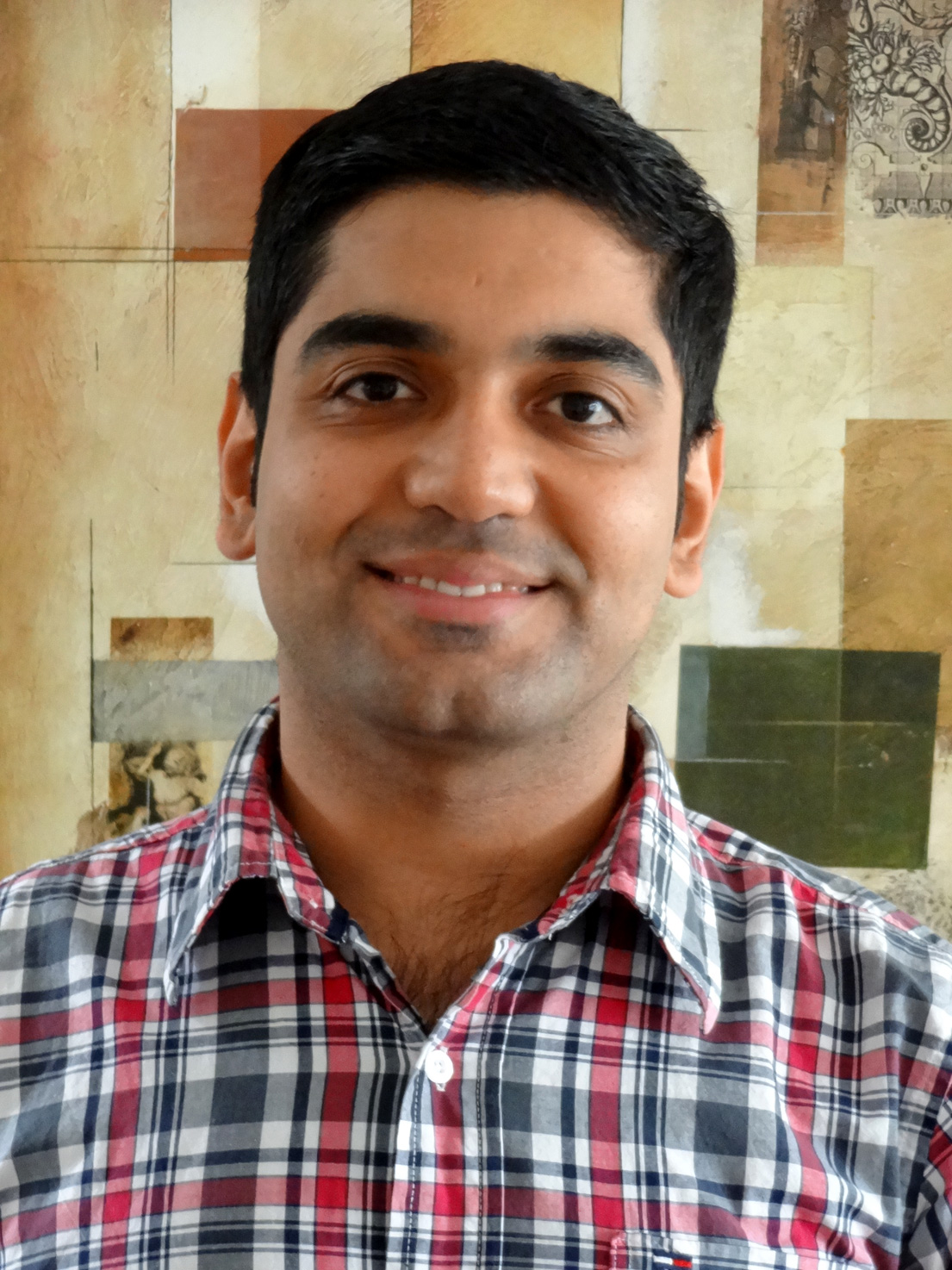Tutorials, Sep. 9th, 2015
Room 222, GLC
| Start | End | Tutorial Title | Speakers |
|---|---|---|---|
| 8:00AM | 8:50AM | Analysis methods for 3D nucleome data: from processing basics to three-dimensional modeling | Ferhat Ay |
| 9:00AM | 9:50AM | Geet Duggal | |
| 10:00AM | 10:50AM | Ming Hu | |
| 11:00AM | 11:50AM | Emre Sefer | |
| 12:00PM | 1:00PM | Lunch Break | |
| 1:00PM | 1:50PM | When imaging informatics meets bioinformatics: How multiple modality image-omics can integrate with genomics data analysis for personalized medicine | Lin Yang |
| 2:00PM | 2:50PM | Computational Construction of Intra-Cellular Networks | Tolga Can |
| 3:00PM | 3:50PM | ||
| 4:00PM | 4:50PM | Computational methods for analyzing intra-tumor heterogeneity using next-generation sequencing | Iman Hajirasouliha |
| 5:00PM | 5:50PM | Functional Module Identification in Biological Networks | Xiaoning Qian |
Analysis methods for 3D nucleome data: from processing basics to three-dimensional modeling
Computational methods for analyzing intra-tumor heterogeneity using next-generation sequencing
Names and affiliations of presenters:
Biosketch
 Ferhat Ay received his B.S. degrees in Computer Engineering and Mathematics both from Middle East Technical University, Turkey in 2007. Ferhat received his PhD degree from the Department of Computer Science at the University of Florida in 2011. He subsequently joined the Department of Genome Sciences at the University of Washington as a Computing Innovation Fellow awarded by Computing Research Association. Ferhat's primary research areas are bioinformatics, computational biology, epigenomics and regulatory genomics. Ferhat works on understanding the relationship between genome architecture and gene regulation in different human cell lines and organisms, such as breast cancer and leukemia cells, and human malaria parasite Plasmodium falciparum, through data integration, computational modeling and statistical approaches. Ferhat has given over 30 scientific presentations at conferences, interviews and as an invited speaker in the past seven years. He has also served in several conference committees including ACM-BCB and participated in a tutorial on Epigenomics at the Pacific Symposium on Biocomputing (PSB). Ferhat is currently Research Assistant Professor in the Department of Preventive Medicine-Health and Biomedical Informatics at Northwestern University.
Ferhat Ay received his B.S. degrees in Computer Engineering and Mathematics both from Middle East Technical University, Turkey in 2007. Ferhat received his PhD degree from the Department of Computer Science at the University of Florida in 2011. He subsequently joined the Department of Genome Sciences at the University of Washington as a Computing Innovation Fellow awarded by Computing Research Association. Ferhat's primary research areas are bioinformatics, computational biology, epigenomics and regulatory genomics. Ferhat works on understanding the relationship between genome architecture and gene regulation in different human cell lines and organisms, such as breast cancer and leukemia cells, and human malaria parasite Plasmodium falciparum, through data integration, computational modeling and statistical approaches. Ferhat has given over 30 scientific presentations at conferences, interviews and as an invited speaker in the past seven years. He has also served in several conference committees including ACM-BCB and participated in a tutorial on Epigenomics at the Pacific Symposium on Biocomputing (PSB). Ferhat is currently Research Assistant Professor in the Department of Preventive Medicine-Health and Biomedical Informatics at Northwestern University.
 Geet Duggal received his B.S. degree in Computer Science from Northwestern University and continued to work for the Department of Defense for five years thereafter. He earned his Ph.D. in the Computational Biology Department at the School of Computer Science from Carnegie Mellon University in December, 2014 (Advisor: Carl Kingsford). During his Ph.D. training, he worked on algorithms to identify compact regions of 3D chromatin structure and to associate these structures with gene regulation. He also developed algorithms for network clustering and inferring network growth models. He is currently interested in continuing work on 3D chromatin structure and gene regulation. In addition, to facilitate the functional annotation of long non-coding RNAs, he is developing methods and services to categorize and search terabytes of RNA-seq gene expression data. Geet is currently a Postdoctoral Fellow at Carnegie Mellon University.
Geet Duggal received his B.S. degree in Computer Science from Northwestern University and continued to work for the Department of Defense for five years thereafter. He earned his Ph.D. in the Computational Biology Department at the School of Computer Science from Carnegie Mellon University in December, 2014 (Advisor: Carl Kingsford). During his Ph.D. training, he worked on algorithms to identify compact regions of 3D chromatin structure and to associate these structures with gene regulation. He also developed algorithms for network clustering and inferring network growth models. He is currently interested in continuing work on 3D chromatin structure and gene regulation. In addition, to facilitate the functional annotation of long non-coding RNAs, he is developing methods and services to categorize and search terabytes of RNA-seq gene expression data. Geet is currently a Postdoctoral Fellow at Carnegie Mellon University.
 Ming Hu, PhD, is an Assistant Professor of Biostatistics in the Division of Biostatistics. His research interests lie in Bayesian analysis in bioinformatics and statistical genetics, with particular focus on analyzing the next generation sequencing data. His most recent work focuses on Bayesian inference of spatial organizations of chromosomes using Hi-C data. He also has interested in developing and applying statistical and computational methods in analyzing ChIP-Seq and RNA-Seq data. He received his PhD from the Department of Biostatistics at the University of Michigan. He was previously a postdoctoral fellow in the Department of Statistics at Harvard University.
Ming Hu, PhD, is an Assistant Professor of Biostatistics in the Division of Biostatistics. His research interests lie in Bayesian analysis in bioinformatics and statistical genetics, with particular focus on analyzing the next generation sequencing data. His most recent work focuses on Bayesian inference of spatial organizations of chromosomes using Hi-C data. He also has interested in developing and applying statistical and computational methods in analyzing ChIP-Seq and RNA-Seq data. He received his PhD from the Department of Biostatistics at the University of Michigan. He was previously a postdoctoral fellow in the Department of Statistics at Harvard University.
 Emre Sefer, PhD, received his B.S. degree in Computer Engineering from Bogazici University Istanbul, Turkey. He also received a M.S. degree in Computer Science from University of
Maryland College Park, and Ph.D. from Carnegie Mellon University School of Computer Science. He is currently a post-doctoral researcher at Computer Science Department, Carnegie Mellon University, Pittsburgh PA. During his Ph.D. training, he worked on algorithms to analyze the present and the past of the social and biological networks from limited uncertain data. His main research interests include systems biology, chromosome conformation capture, and machine learning applications on social and biological networks.
Emre Sefer, PhD, received his B.S. degree in Computer Engineering from Bogazici University Istanbul, Turkey. He also received a M.S. degree in Computer Science from University of
Maryland College Park, and Ph.D. from Carnegie Mellon University School of Computer Science. He is currently a post-doctoral researcher at Computer Science Department, Carnegie Mellon University, Pittsburgh PA. During his Ph.D. training, he worked on algorithms to analyze the present and the past of the social and biological networks from limited uncertain data. His main research interests include systems biology, chromosome conformation capture, and machine learning applications on social and biological networks.
Tutorial Abstract:
The field of regulatory genomics has recently witnessed significantly increased interest in the three-dimensional structure of DNA in the nucleus, catalyzed by the availability of chromosome conformation capture (3C) data sets that characterize the 3D organization of chromatin at a genome-wide scale. This organization, also referred to as the 3D nucleome, is not only important for packing the genome into the nucleus but also has significant impact on how the genome functions. In this tutorial, we will present recent tools and methodologies developed for analysis of genome-wide 3C data sets generated using high-throughput sequencing (Hi-C). We will cover computational approaches that span: (i) processing basics and normalization of Hi-C data, (ii) identification of genomic domains with high contact intensity, (iii) extraction of significant contacts, and (iv) inference of 3D models of the chromatin organization from contact count data. This tutorial will be beneficial for researchers in the broad fields of computational systems biology, gene regulation and transcription, next generation sequencing data analysis, and biological network modeling and analysis.
Intended Audience:
Students, postdocs, faculty members and researchers working on basic science, clinic research and translational research, with particular focus on chromatin spatial organization and transcription regulation mechanisms.
Tutorial Website:
http://noble.gs.washington.edu/proj/3DNtutorial2015/
Tutorial Length:
4 units of 50 minutes each.
Tutorial Title: Computational Construction of Intra-Cellular Networks
Names and affiliations of presenters:
Biosketch
 Tolga Can received his BSc degree in computer engineering from Middle East Technical University, Turkey, in 1998, and his PhD degree in computer science from the University of California at Santa Barbara in 2004. He is currently an associate professor in the Computer Engineering Department, Middle East Technical University, Turkey. His main research interests are bioinformatics, graph theory, and algorithms. He has worked on protein structure visualization and alignment and on construction and analysis of large-scale protein-protein interaction networks. He has taught Introduction to Bioinformatics and Advanced Topics in Bioinformatics courses since 2006. He has also taught computational geometry in the training camps for Informatics Olympiads since 2007 and he has served on the scientific executive committee of the Informatics Olympiads in Turkey since 2011.
Tolga Can received his BSc degree in computer engineering from Middle East Technical University, Turkey, in 1998, and his PhD degree in computer science from the University of California at Santa Barbara in 2004. He is currently an associate professor in the Computer Engineering Department, Middle East Technical University, Turkey. His main research interests are bioinformatics, graph theory, and algorithms. He has worked on protein structure visualization and alignment and on construction and analysis of large-scale protein-protein interaction networks. He has taught Introduction to Bioinformatics and Advanced Topics in Bioinformatics courses since 2006. He has also taught computational geometry in the training camps for Informatics Olympiads since 2007 and he has served on the scientific executive committee of the Informatics Olympiads in Turkey since 2011.
Tutorial Abstract:
Relational data about cellular components accumulate at public databases at an increasing rate. Protein-protein interactions (PPI), metabolic reactions, transcriptional regulatory interactions, and genetic interactions are available for many model organisms. In parallel with accumulation of biological data, computational techniques are developed for inferring relations about cellular components at higher accuracy and coverage. In this tutorial, recent computational techniques for inference of several types of biological networks will be presented. This two units length tutorial will first give an overview of different types of biological networks, such as 1) PPI networks including signaling networks and protein complexes, 2) transcriptional regulation networks with different regulatory elements such as transcription factors and microRNAs, 3) metabolic networks, and 4) functional association networks such as co-expression and genetic interaction networks. On PPI networks, we will discuss simultaneous prediction and alignment of networks (Alkan and Erten, 2015) and methods for directing the undirected edges in experimental data. At the second half, we will discuss construction of transcriptional regulation networks by utilizing ENCODE data (Gerstein et al, 2012). We will conclude by models for genome-scale metabolic networks (Dias et al, 2015) and methods for validation of such metabolic models (Schmidt et al, 2014).
Intended Audience:
The intended audience are graduate students or post-doctoral researchers who are working or interested in computational systems biology and in particular inference of biological networks. Some computational background on graph theory and design and analysis of algorithms is required to follow the content.
Tutorial Website:
http://www.ceng.metu.edu.tr/~tcan/ACM-BCB_tutorial/
Tutorial Length:
1 unit of 50 minutes.
Tutorial Title: Functional Module Identification in Biological Networks
Names and affiliations of presenters:
Biosketch
 Xiaoning Qian and his students have been developing scalable and efficient algorithms for functional module identification in biological networks. Their recent functional module identification algorithms on both individual and multiple networks have been published in Bioinformatics, BMC Bioinformatics, BMC Systems Biology, as well as conferences including the ACM Conference on Bioinformatics, Computational Biology, and Biomedicine (ACM BCB). His current research on computational network biology has been funded by NSF and NIH.
Xiaoning Qian and his students have been developing scalable and efficient algorithms for functional module identification in biological networks. Their recent functional module identification algorithms on both individual and multiple networks have been published in Bioinformatics, BMC Bioinformatics, BMC Systems Biology, as well as conferences including the ACM Conference on Bioinformatics, Computational Biology, and Biomedicine (ACM BCB). His current research on computational network biology has been funded by NSF and NIH.
Tutorial Abstract:
Cellular functions or dysfunctions arise from complex interactions among biological units at different levels in organisms. Advances in high-throughput profiling techniques have enabled researchers to analyze large-scale interaction data to yield a better understanding of biological systems. Functional module identification may provide such an avenue to identify molecules working in coordination as functional modules and help reveal cellular functional organization. This tutorial provides introductory overview of basic concepts, mathematical definitions, and state-of-the-art computational algorithms for functional module identification, focusing on specific challenges in biological network analysis. It is intended for researchers with interest and expertise on biological network analysis to identify biological as well as computational challenges, potential solution strategies, as well as biomedical applications for future research.
Intended Audience:
This tutorial provides an introduction to computational methods for functional module identification in biological networks, covering basic concepts, mathematical models, and optimization algorithms centering about specific challenges arising from large-scale biological networks. It may help students, postdocs, and researchers at all stages of their career better understand the involved biological as well as computational problems, develop more effective methods for functional module identification, and identify their applications in biomedical research problems.
Tutorial Website:
http://www.ece.tamu.edu/~xqian/FMItutorial.html
Tutorial Length:
1 unit of 50 minutes.
Names and affiliations of presenters:
Biosketch
 Dr. Lin Yang is an associate professor with the J. Crayton Pruitt Family Department of Biomedical Engineering at University of Florida. He leads the Biomedical Image Computing and Imaging Informatics (BICI2 <http://www.bme.ufl.edu/labs/yang/group.html>) Lab. He was recruited to University of Florida through UF Preeminence Hiring Plan. His major research interests are focus on biomedical image analysis and imaging informatics, computer vision, biomedical informatics, and machine learning. He is also working on high performance computing and computed aided health care and information technology using big data. He has published over 70 peer-reviewed journals and premium conferences, including PAMI, TMI, TBME, CVPR, ECCV, MICCAI, IPMI, etc. His lab's research is funded by multiple federal funding, including NIH R01. He also serves in multiple NIH study sections and NSF review panels.
Dr. Lin Yang is an associate professor with the J. Crayton Pruitt Family Department of Biomedical Engineering at University of Florida. He leads the Biomedical Image Computing and Imaging Informatics (BICI2 <http://www.bme.ufl.edu/labs/yang/group.html>) Lab. He was recruited to University of Florida through UF Preeminence Hiring Plan. His major research interests are focus on biomedical image analysis and imaging informatics, computer vision, biomedical informatics, and machine learning. He is also working on high performance computing and computed aided health care and information technology using big data. He has published over 70 peer-reviewed journals and premium conferences, including PAMI, TMI, TBME, CVPR, ECCV, MICCAI, IPMI, etc. His lab's research is funded by multiple federal funding, including NIH R01. He also serves in multiple NIH study sections and NSF review panels.
Tutorial Abstract:
We are living in a revolutionary age, witnessing the next generation of biomedical images and genomics information emerging in astounding volume and rich formats. This rapidly grown, efficiently delivered, densely connected and incrementally well-defined multiple dimensional genotype and phenotype data have fundamentally reshaped the ways researchers can express their thoughts, interact with their colleagues and patients, analyze their data, and lead to ultimately deeper understanding of the nature of biology and diseases. The objective of this tutorial is to introduce to the boarder community of bioinformatics, computational biology, and health informatics researchers the current state-of-the-arts in biomedical image analysis and imaging informatics, including both biology, pathology, and radiology. We will also review some emerging machine learning tools used in our biomedical image analysis applications, such as deep learning. The ultimate goal is to inspire new collaborations between imaging informatics researchers and bioinformatics and computational biology researchers to tackle the challenges presented in personalized medicine together.
Intended Audience:
Bioinformatics and system biology researchers who are interested in integrating image-omics with genomics for personalized medicine. Researchers who are not familiar with biomedical image analysis would also be interested in learning the pipeline.
Tutorial Website:
http://www.bme.ufl.edu/labs/yang/acm_bcb.html
Tutorial Length:
1 unit of 50 minutes.
Names and affiliations of presenters:
Biosketch
 Iman Hajirasouliha is a Post Doctoral scholar at the computer science department, Stanford University. His research focuses on computational genomics, large-scale sequence analysis, and analyzing intra-tumor heterogeneity and somatic structural variants in cancer. Iman received his B.Sc. in Computer Engineering (software) from Sharif University and his M.Sc. and Ph.D. in Computer Science from Simon Fraser University (SFU). Prior to joining Stanford, Iman held a Post Doctoral Research Associate of Computing Science and Center for Computational Molecular Biology at Brown University for 18 months. During his Ph.D. studies, he also worked at the Genome Sciences department, University of Washington under Evan Eichler, as a visiting scholar and actively participated in the 1000 Genomes Project. He received an NSERC Postdoctoral Fellowship (PDF), an NSERC Alexander Graham Bell Canada Graduate Scholarship (CGS-D) and most recently, a Simons-Berkeley Research Fellowship.
Iman Hajirasouliha is a Post Doctoral scholar at the computer science department, Stanford University. His research focuses on computational genomics, large-scale sequence analysis, and analyzing intra-tumor heterogeneity and somatic structural variants in cancer. Iman received his B.Sc. in Computer Engineering (software) from Sharif University and his M.Sc. and Ph.D. in Computer Science from Simon Fraser University (SFU). Prior to joining Stanford, Iman held a Post Doctoral Research Associate of Computing Science and Center for Computational Molecular Biology at Brown University for 18 months. During his Ph.D. studies, he also worked at the Genome Sciences department, University of Washington under Evan Eichler, as a visiting scholar and actively participated in the 1000 Genomes Project. He received an NSERC Postdoctoral Fellowship (PDF), an NSERC Alexander Graham Bell Canada Graduate Scholarship (CGS-D) and most recently, a Simons-Berkeley Research Fellowship.
Tutorial Abstract:
Next-generation sequencing (NGS) technologies have enabled the sequencing of many cancer genomes. Recent studies of tumor samples have shown that most tumors exhibit extensive intra-tumor heterogeneity, with multiple subpopulations of tumor cells containing different somatic mutations. In this tutorial, we discuss several recent computational methods for the purpose of characterizing intra-tumor heterogeneity. In particular, we present novel algorithms for inferring clonal evolution and reconstructing tumor phylogenies from single or multiple NGS samples.
Intended Audience:
Graduate students, postdocs and researchers who are interested in the field of computational cancer genomics. Some background in algorithm design and familiarity with next generation sequencing data is desired.
Tutorial Website:
http://cs.brown.edu/~imanh/acm-bcb.html
Tutorial Length:
1 unit of 50 minutes.